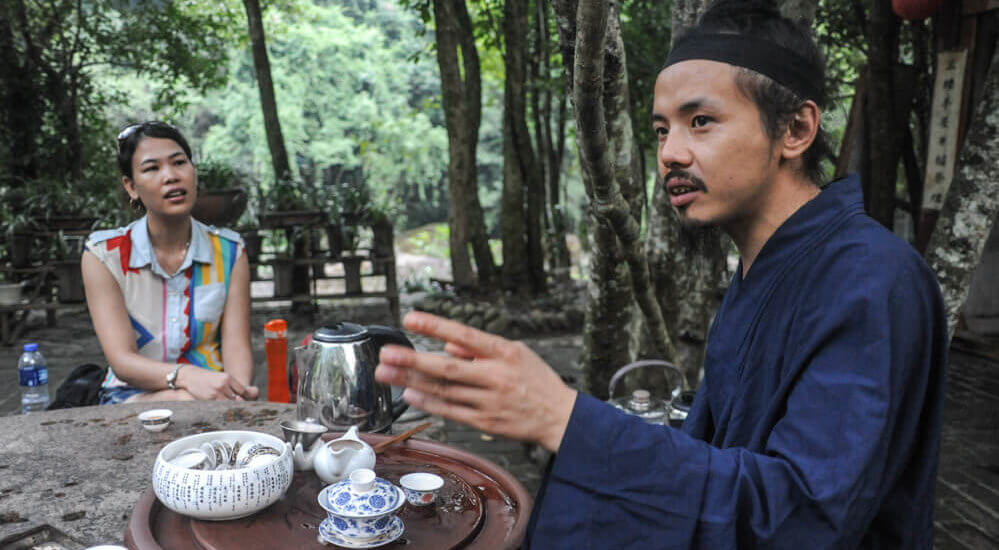And belatedly again
Happy Lunar New Year!
May it be filled with health, happiness, laughter, friends, adventurous travels, and the freshest most fragrant teas on the planet!
They’re in Fujian by the way, on the top of a mountain at a small Daoist temple in Wuyishan!
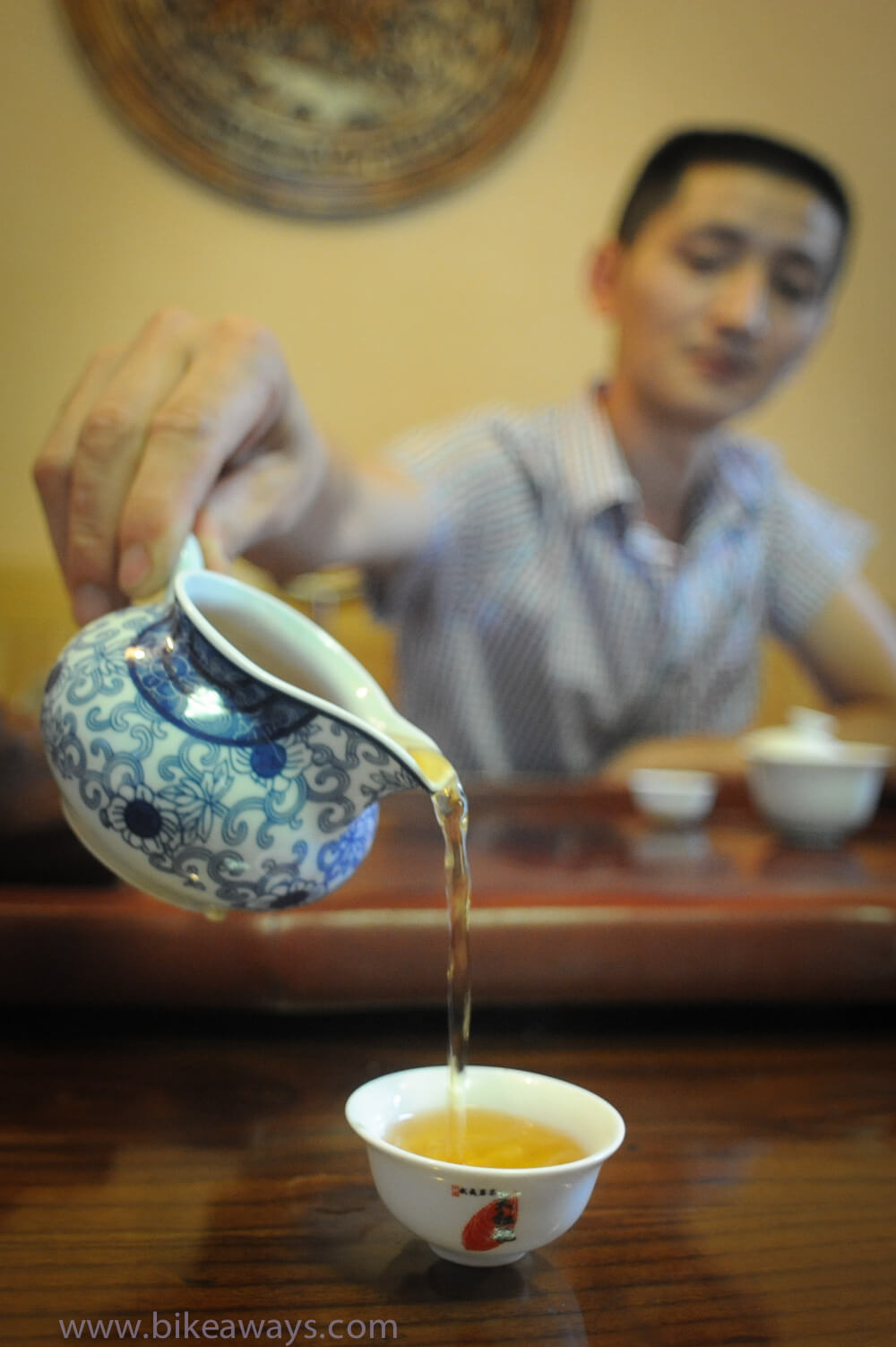
A Wuyishan tea master
Tea!
Riding through it,
Inhaling it,
Meeting the famers who grow it,
Watching the tasters swish, swallow and breathe out from their noses, all at the same times as to fully sense the flavour.
Listening to dealers wax poetic about it.
Drinking it with monks in monasteries along Wuyishan’s hiking routes
Buying bags of it that sit in my freezer for years pretending I’m going to drink it when I get home.
Honestly, the best way to drink good Chinese tea is to drink it where it was grown, brewed by a master , steeped in water from a local mountain spring.
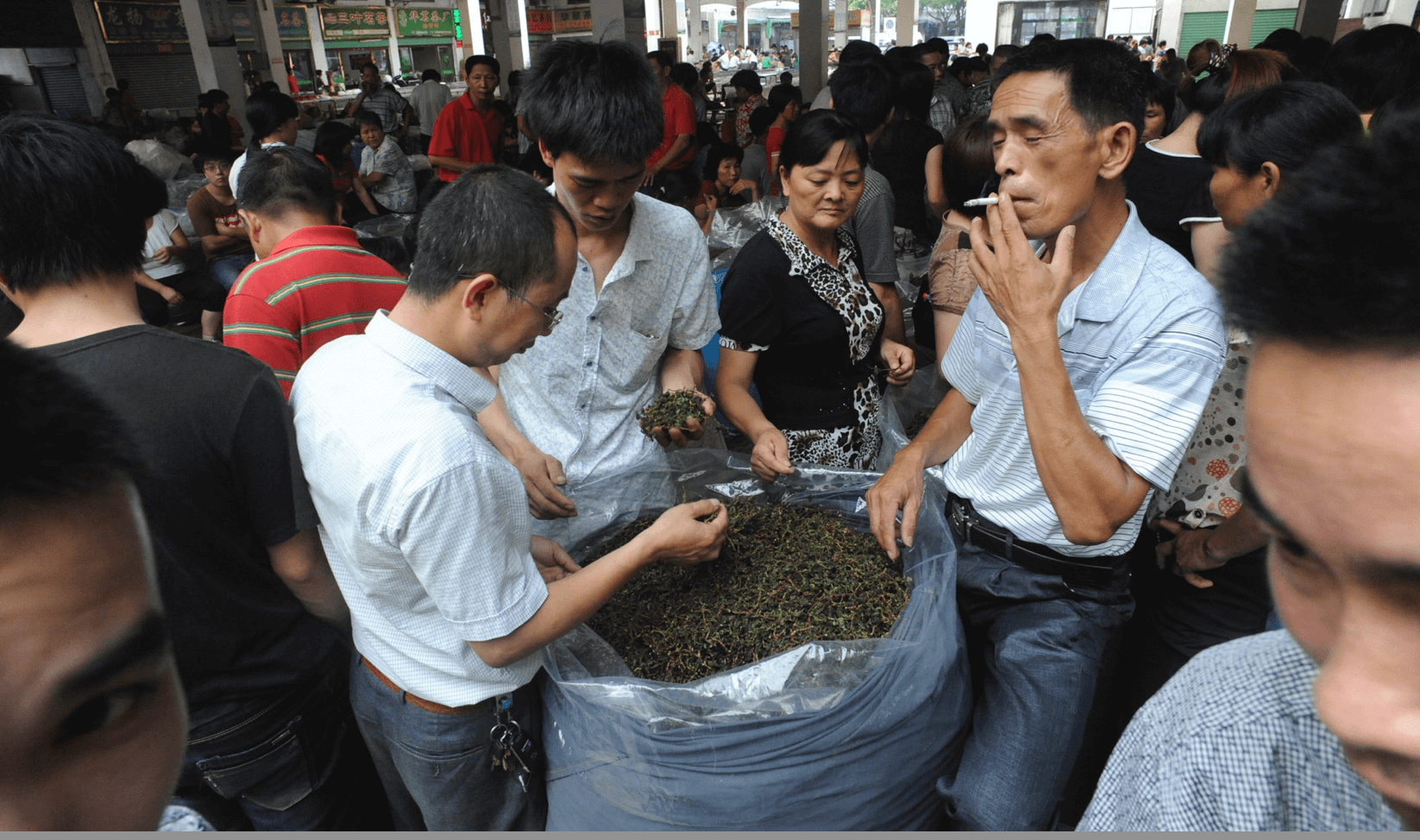
The Anxi wholesale tea markets
Tea Rides!
This year will be our 6th year cycling the tea country that surrounds the Fujian Tulou in the Minnan region of Fujian. It’s still my favourite ride because I get to drink tea all along the way, and there is a delicious dose of tea hospitality thrown in with every cup. Not to mention that its a short easy weekend getaway from Hong Kong.
The 1st week of May bike ride is my favourite time to ride as its still cool and brings the first flush of spring teas.
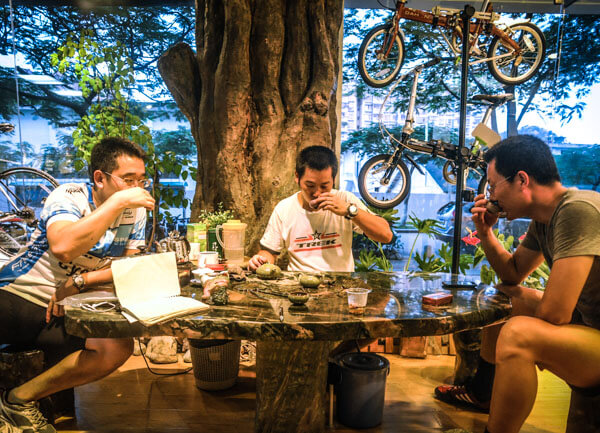 Cycling refreshment, Xiamen, Fujian
Cycling refreshment, Xiamen, Fujian
Tulou- in case your were wondering are the enormous rammed earth circular courtyard castles built by the Hakka over the last 1200 years, are the eye candy and the cultural gristle of the ride but it is the sweet cut grass and lightly floral scents of Tie Guanyin floating on the breeze that satisfies the soul.
Stop in a an off-the-beaten-track Tulou and tea (usually from the farmers own harvest) will be offered up as a matter of honour-bound hospitality.
Tea is offered up from the heart but with a casual flare known as Gongfu style.
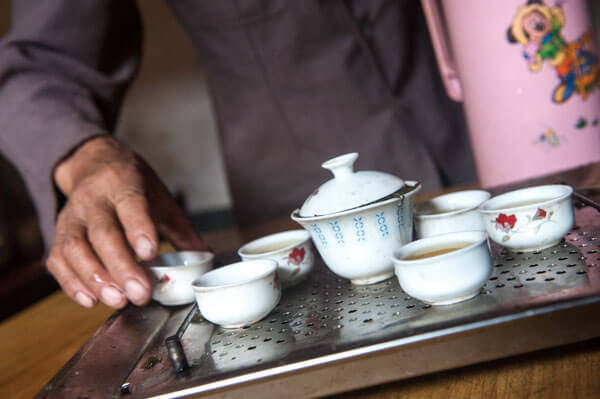
Kung Fu Tea!
Gongfu is the Mandarin pronuciation of Kung Fu and refers to the meditative discipline applied to any technique that makes something that is difficult look simple.
As a population, its only the Fujianese (in my experience) who maintain this tradition with tea, in their day to day lives.
Even in small factories along the coast (another thing that Fujian is famous for) I was tickled to see dedicated tea tables, where workers are welcome to top up the gaiwan ( thats the tea bowl variety of tea pot that burns your hands unless your gong-fu adept) and take time out for multiple thimble-sized cups of tea.
A few friends from other parts of China roll their eyes at this Alice in Wonderland version of tea drinking.
The time is money attitudes of Shanghai and Hong Kong are less of a thing in rural Fujian
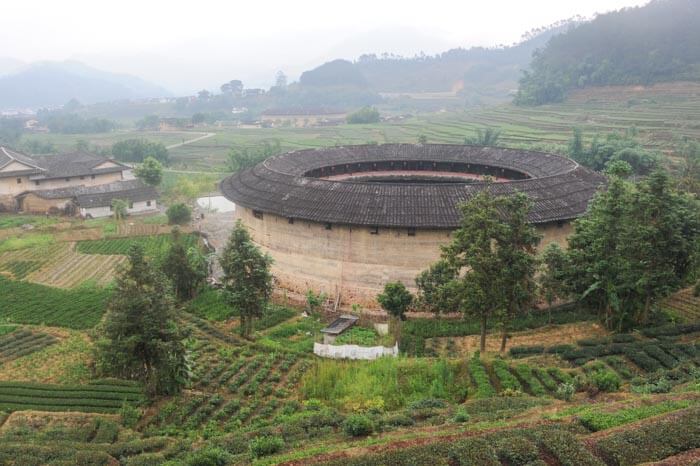
Tea Hikes and rock teas
In Southern Fujian we ride through tea that becomes processed into Tie Guanyin (Iron Goddess Tea), a floral cut-grass, steel-green coloured oolong .As you go North, into the hills and high up amongst the rocks of Wuyishan you go deeper into darker Oolongs that are considered amongst China’s finest.
Last November I caught the new 4 hour bullet train train from Xiamen to Wuyishan to check out hiking routes amidst the tea and rocks with the idea of expanding our Fujian weekender into an east coast tea journey, that starts in Xiamen passes through Wuyishan, Hangzhou (land of the famous Long Jing ((dragon well) teas) and finishing in Shanghai.
Because of the rocks they grow on, Wuyi’s oolong teas are known as rock teas (yan cha), The mountains offer brilliant hiking with remote Taoist monasteries tucked amidst the rocky tea gardens.
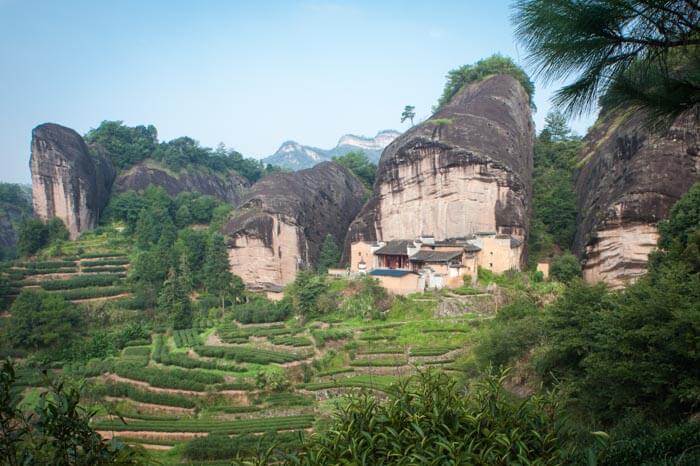
A Daoist (Taoist) monastery amidst the the Wuyi Mountains, and the famous “rock teas” that are fed from them.
Da Hong Pao – the best tea in China!
The most famous tea in Wuyishan is Da Hong Pao – Big Red Robe, named for a student who stressed himself out so badly during exam times that he had to be nursed by a bunch of Wuyishan monks who revived his sprits with tea.
When the student later became a Mandarin I.e. government official , he sent a big red robe ( symbolic of the power of state) to wrap up the precious tea bushes that had healed him.
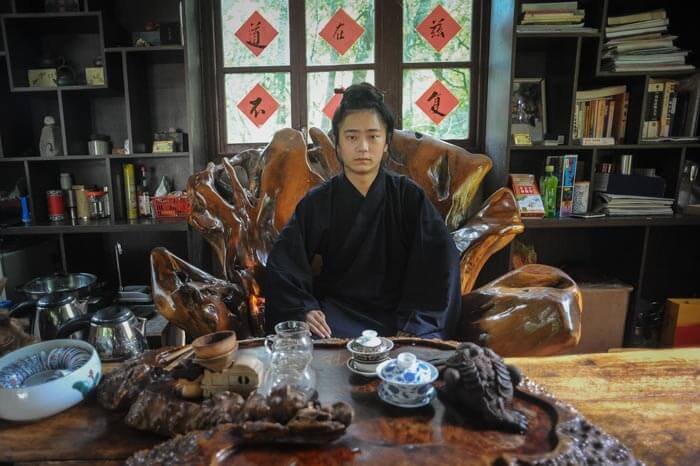
Daoist Monk at ornate tea table in Wuyishan.
I love the hike to Da Hong Pao. There’s a road there that you can drive or ride, but there’s also a back way through the mountains and down to the three original 700 hundred years old Da Hong Pao tea bushes. You pass by some wonderful tea gardens and a little known deists monastery where the lone taoist monk used to be grumpy, but has just recently been replaced by a much more rambunctious soul.
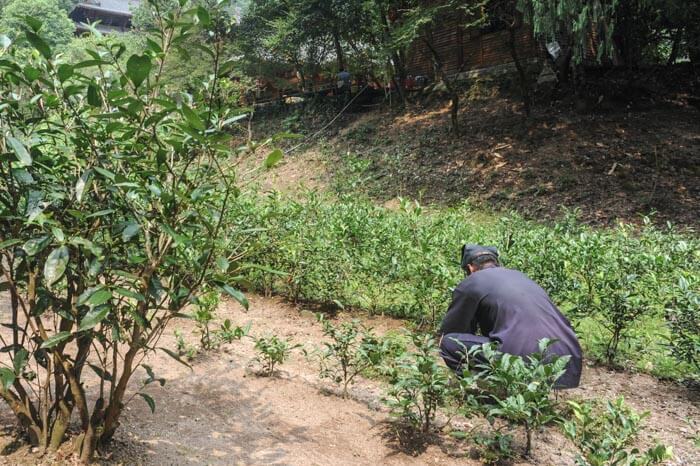
The tea bushes in Da Hong Pao are a pilgrimage only for those dedicated to tea. They are very understated – wild and straggly, 20 metres up a cliffside. Tea from these bushes sold for 14000 USD per gram in the late 90s on one of only two times when the tea has been released for auction. Usually it goes straight to the forbidden city in Beijing for the modern emperors of China.
Nixon was rumoured to have received a couple of grams, but people say this is all marketing hype. Zhang Yi Mo of House of flying daggers and Beijing Olympics Opening ceremony fame has created a show called Impressions Da Hong Pao – which is one of the most interesting stage productions I have participated in – the audience is on the stage and all the action is revolving around you, close and far away.
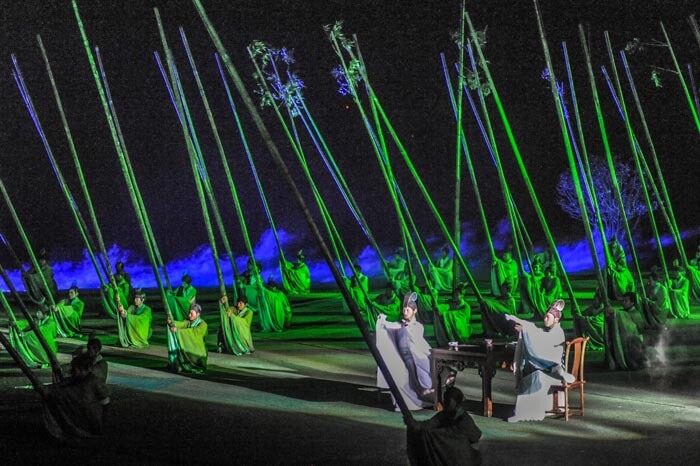
Director Zhang Yi Mou’s “Impressions(of) Da Hong Pao”.
I can feel my myself starting to sound like a tea bore.
And you can sound like one too.
Join us on our next Fujian tea ride on May 3rd – 5th or right through to the 7th on our extended Wuyishan version.
And watch this space as this ride evolves into a more full bodied east coast tea journey with a caramel after taste.
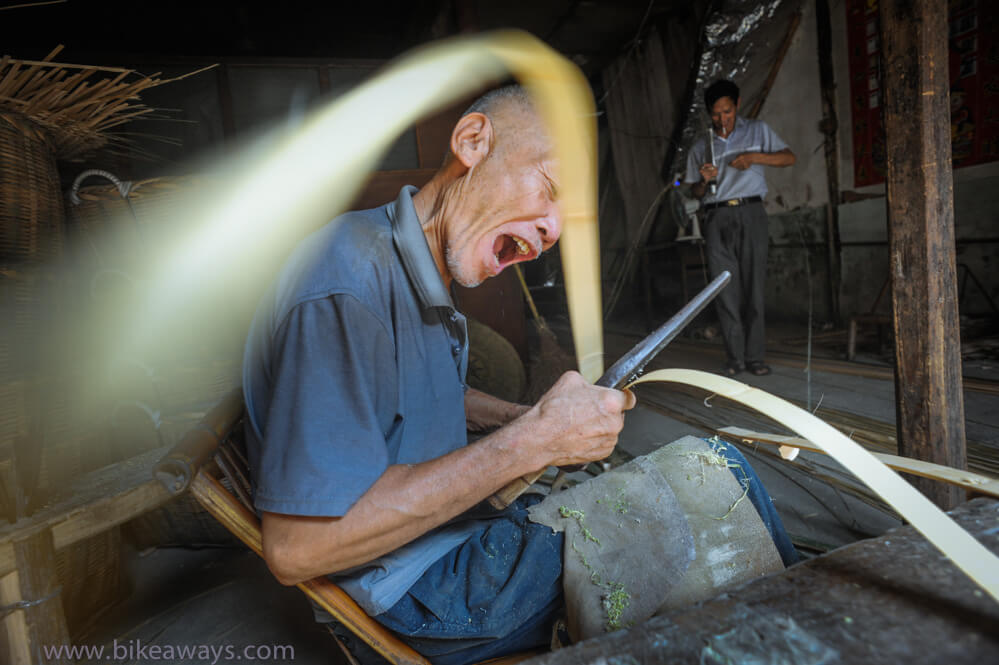
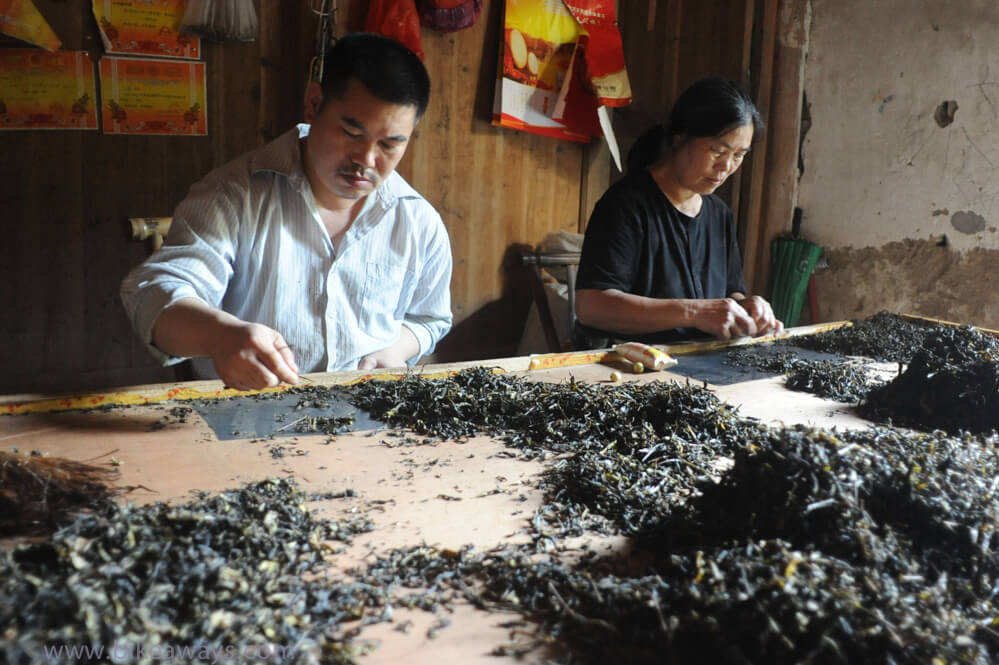
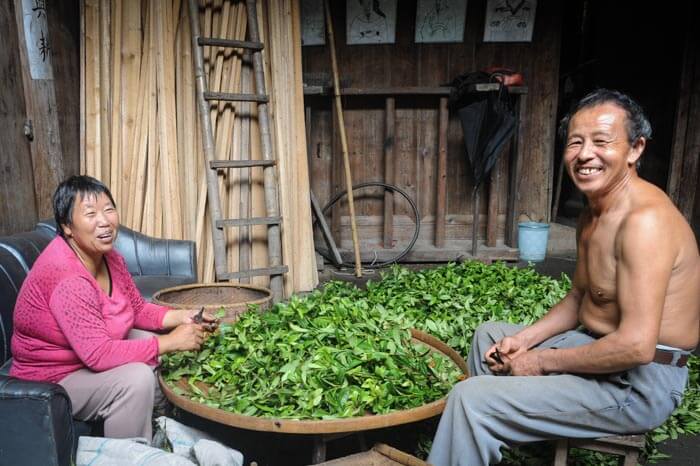
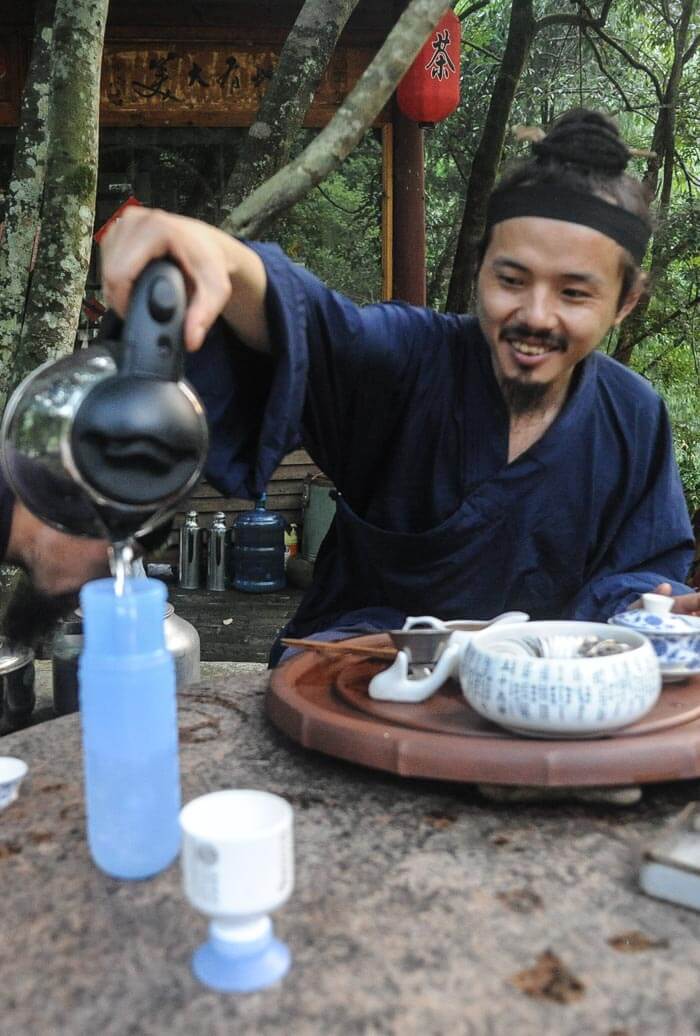
Yours in tea!
